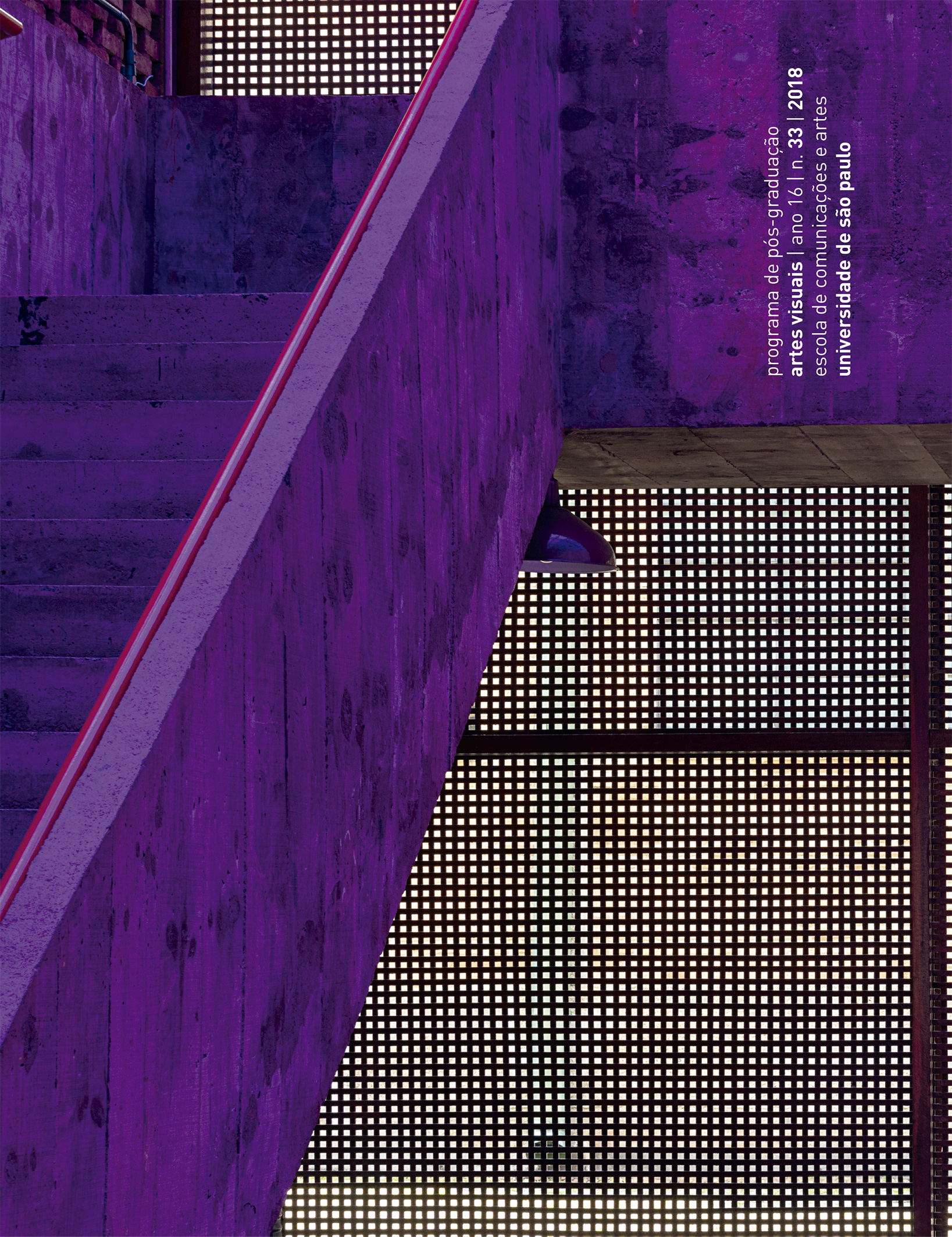Eisenstein’s visual revolution of the art in Ivan, the Terrible
DOI:
https://doi.org/10.11606/issn.2178-0447.ars.2018.146458Keywords:
Movie message, cultural production, art critical, aesthetic construction, frame analysisAbstract
The proposal of the article is the reading of the movie and photographic message of the film Ivan the Terrible – Part II by the director Sergei Eisenstein. The research methodology has as its starting point the analysis of the frame devised by the critic Roland Barthes between the obvious and obtuse. In addition, the circulation of meanings of the artistic object is extended to the descriptive and cultural of Erwin Panofasky, besides the lecture of the point of view technical-aesthetic. An instrument of denunciation, the classic Ivan, the Terrible – Part II is perpetuated by being legitimized as a historical record of the past and a metaphor of the present. This research in the area of art theory and critic, works with the idea that with plastic lyricism and political discussion this cinematographic work contributes to promote a visual revolution.
Downloads
Downloads
Published
Issue
Section
License
The responsibility for obtaining written permission to use in the articles materials protected by copyright law lies entirely with the author(s). Ars is not responsible for copyright breaches made by its collaborators.
The authors have the copyrights and grant the journal the right of the first publication, with the article licensed under the Creative Commons BY-CC License.
Licensees have the right to copy, distribute, display, and carry out the work and make derivative works from it, including with commercial purposes, granted that they give the due credit to the author or licensor, as specified by them.
Licensees compromise to inform the appropriate credit, provide a link to the license, and indicate if changes were made.
Respected the terms of the license, the licensors/authors are not allowed to revoke the conditions above mentioned.
After the publication of the articles, the authors keep the copyrights and the rights to republish the text exclusively in unpublished books and collections.


